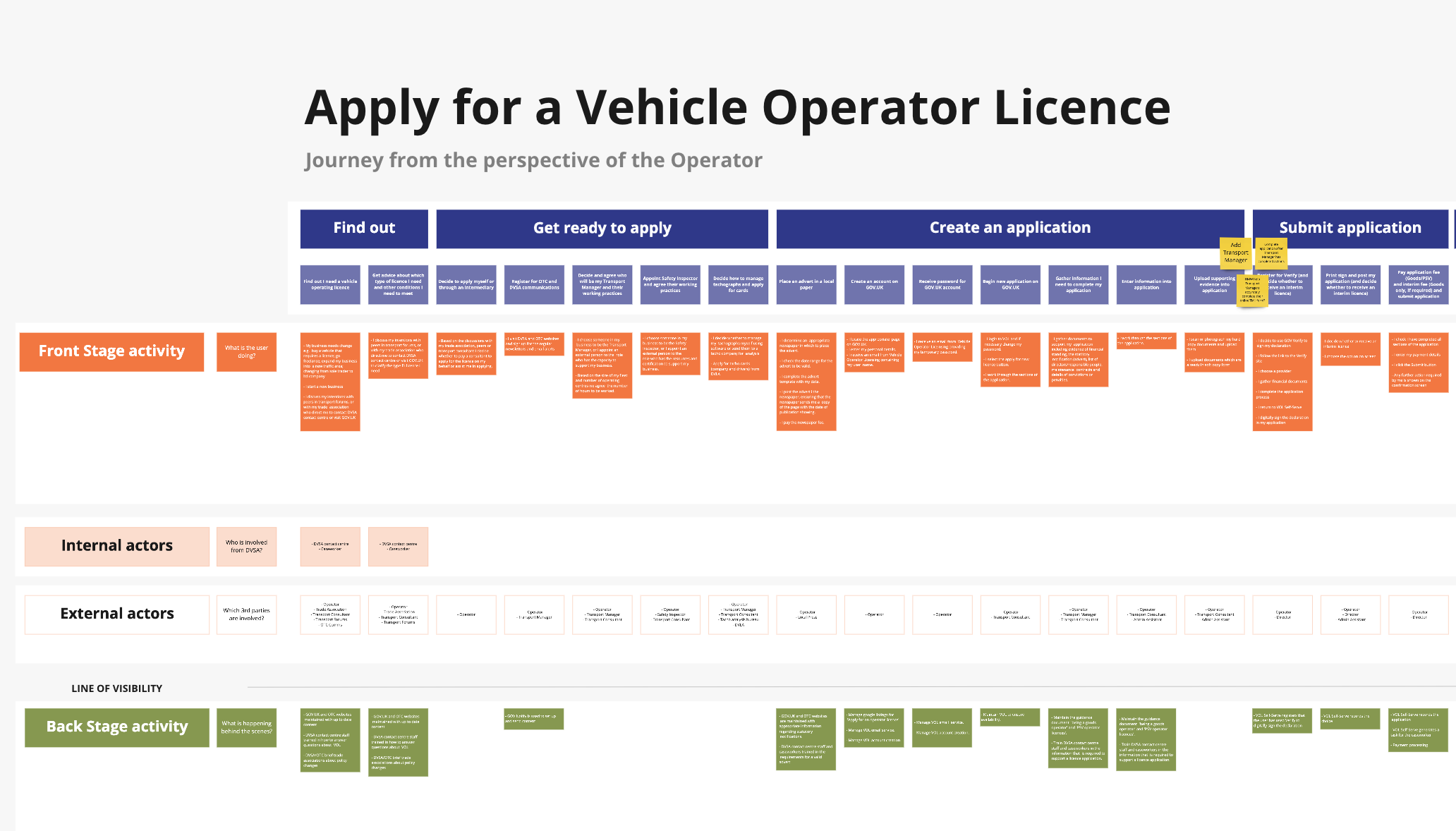Feb 1, 2021
Exploring how to improve applications on the Vehicle Operator Licence service
A case study showing the design decisions taken to try and improve the quality of applications on the Vehicle Operator Licence (VOL) service

Introduction
If you drive a goods vehicle weighing more than 3.5 tonnes for trade or business purposes, you are required by law to have a goods vehicle operator's licence (VOL). This case study focuses on improving the quality of VOL applications at submission, reducing caseworker demand, and speeding up the licensing process.
The Situation
When we analysed a sample of 350 applications for a vehicle licence, only 5% were complete upon submission, leading to high caseworker involvement. Improving application quality became essential to reduce caseworker workload and licensing time.
The Task
Working with a team of researchers, designers, developers, and stakeholders, the task involved finding solutions to reduce caseworker involvement and enhance user satisfaction.
Reviewing the Data
Data analysis revealed issues in providing financial evidence and advert information. Lack of user education during the application process was evident.

Defining the Problem
A brainstorming session helped prioritise four key areas: introducing on-page guidance, creating a 'checker tool', addressing advert evidence problems, and educating users on providing financial information.
On-Page Guidance
Five key areas in the application process were identified for user education. Prototypes were tested with positive feedback.

Creating a 'checker tool'
Despite not being able to build a full tool, a minimal viable product (MVP) was designed and added at the start of the application journey to inform users about common issues.
Exploring Alternatives to the Advert Problem
Due to constraints, ideas for addressing the advert problem are still in early discovery stages.
Conclusion
The ongoing "right first time" project aims to continuously improve application quality. Implemented solutions have already made a positive impact, and the team continues to learn and support users throughout their applications.